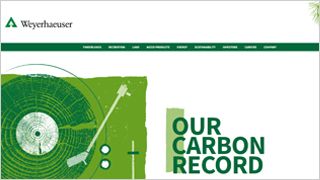 Building Sustainably With Wood
Building Sustainably With Wood
The ultimate green building material
Wood is the ultimate green building material. It can be produced on an endlessly renewable cycle that protects the environment and sustains rural communities. Its production consumes less energy, emits fewer greenhouse gases (GHGs), releases fewer pollutants, stores more carbon and generates less water pollution compared with other building materials such as steel and concrete. It’s also safe, durable and beautiful.
Wood products are increasingly being recognized for the sustainable benefits they provide, and our wood products can help you meet important sustainable building objectives because they are eligible for credits under major green building standards such as LEED®, Green Globes® and the National Green Building Standard™. And by leveraging our software solutions, Weyerhaeuser customers can maximize the efficient use of this renewable product and decrease on site waste.

Forests are a remarkable renewable resource. When managed sustainably, they can last forever while also providing wood products to the world.

Using wood products from sustainably managed forests is an ever-increasing equation that continues to pull more and more carbon out of the atmosphere over time.

Meeting Green Building Requirements
Our wood products are eligible for credits under major green building standards and can help you meet important sustainable building objectives.

Sourcing Responsibly from Forests
We source wood from many different types of forest owners, but regardless of who we are buying wood from, we ensure it comes from responsibly managed forests.

Wood Products Have Low Embodied Carbon
Wood products have significantly lower embodied carbon than steel and concrete.

Helping Builders Reduce On-site Waste
Our innovative construction techniques can help reduce job-site waste and construction time.
WOOD IS A RENEWABLE RESOURCE
After we harvest trees in our sustainably managed working forests and make them into a multitude of different wood products, we replant the forest and start the cycle over again. All the forests we own and manage are certified to the SFI® Forest Management standard, which requires that we manage our forests sustainably. To ensure we never harvest more than our forests grow, we harvest an average of two percent of our forests each year and reforest 100 percent of the land we harvest.
While it may seem counterintuitive, research has shown that countries with robust forest products sectors have low rates of deforestation and that strong wood products markets can contribute to an increase in forest area. Strong markets for wood products create an incentive for smaller landowners (who harvest less frequently) to replant after harvesting and to keep forests forested rather than using them for another commercial purpose. This creates an endless cycle of timber growth and ensures that when trees are harvested to create our products, a new cycle of trees begins to grow in their place.
Keeping forests as forests provides critical ecosystem benefits that society relies on. While forests are managed for wood production, they simultaneously provide wildlife habitat, recreational opportunities, water filtration, carbon storage and more.
Back to Building Sustainably With Wood Overview
SOURCING RESPONSIBLY FROM FORESTS
We source about 40 percent of the wood used to make our products from our own Sustainable Forestry Initiative®-certified forests, about 22 percent from other certified landowners, with the remaining 38 percent coming from noncertified landowners — typically small, family-owned forests. Whether it comes from a certified forest or not, all the wood used to make our products is from legal, noncontroversial and responsible sources.
It is our long-standing policy and practice to ensure that we, and all our wood suppliers, comply with all laws, and that our procurement practices do not cause or encourage destruction of forest areas at risk of loss from unsustainable forest management practices. While avoiding illegal and controversial sources of wood is important, it is just a first step. That is why we certify all our manufacturing facilities to the Sustainable Forestry Initiative® Fiber Sourcing or Certified Sourcing Standards. These standards ensure we implement effective risk assessment and due diligence programs and work to expand the use of sustainable forest management practices on noncertified forests.
Whether we are buying wood from a large landowner, like us, or a small family forest owner, we work with our suppliers to ensure they have access to sustainable forestry information. We require the use of best management practices to protect water quality and that loggers are trained in sustainable forestry practices. Beyond working with our direct suppliers, we monitor our wood supply area for sustainable forestry practice implementation and work with local logger training and landowner education programs to close identified weaknesses and highlight focus areas.
For customers who are looking for assurance that the wood in their products originated from a certified forest, we maintain SFI and PEFC Chain of Custody certification at select mills. This certification allows us to provide customers with a verified claim that the wood products they buy from us come from certified, sustainably managed forests. This level of transparency and traceability is often utilized in green building programs as a proof point of sustainable forest management.
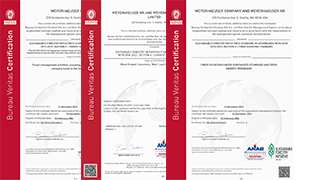
Our SFI and PEFC certificates verify for our customers, community and investors that we manage our forests sustainably and source wood from legal, non-controversial and responsible sources.
Business Integration
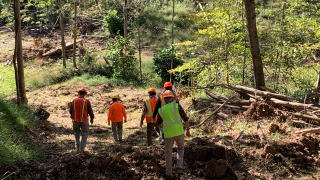
Our Wood Procurement Policy guides the responsible sourcing of wood throughout our company.
Business Integration
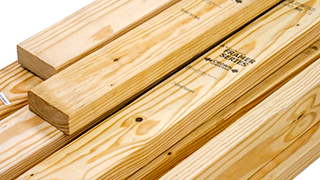
Responsible Sourcing by the Numbers
We transparently share and update data annually about our fiber sourcing.
Blog Post
WOOD PRODUCTS STORE CARBON
As trees grow, they absorb carbon dioxide from the air and store it in their trunks, limbs, roots and leaves. When we harvest trees at their peak of growth and turn them into wood products such as lumber, we lock that carbon into the product and then replant new trees to store more carbon. It is an ever-increasing equation that continues to pull more and more carbon out of the atmosphere over time. The solid and engineered wood products we made in 2024 alone will keep more than the equivalent of 10 million metric tons of CO2 out of the atmosphere for at least 100 years. That is equal to the amount of emissions generated by the electricity used in 2 million homes in one year (based on the U.S. Environmental Protection Agency's Greenhouse Gas Equivalencies Calculator).
Review our Carbon Record to learn more about the powerful contribution we make to mitigating climate change by sequestering and storing carbon in our forests and wood products.
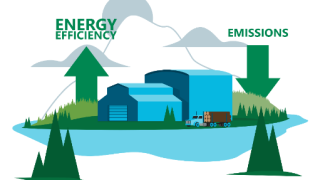
Energy Efficiency in Our Wood Products Business
Learn about our proactive, in-depth approach to managing our energy usage within our manufacturing and distribution facilities.
WOOD PRODUCTS AND EMBODIED CARBON
Independent life-cycle assessments confirm that wood products are created using significantly less energy than the mining and manufacturing processes to produce many other building materials. In fact, researchers have found that buildings made primarily out of wood have significantly lower embodied energy — a measure of all the energy required to make a product — compared to steel and concrete.
Separate studies published in the Journal of Sustainable Forestry and the Journal of Forestry, as well as findings from the Consortium for Research on Renewable Industrial Materials, have determined that houses constructed with wood have between 17 to 58 percent lower embodied energy than those framed with steel, and between 16 to 55 percent lower embodied energy than those made primarily with concrete. For builders and architects who are looking to contribute to the decarbonization of the building sector, increasing the use of wood products in buildings is a win-win solution. If you are new to the embodied carbon conversation, Think Wood and Wood Works provide helpful resources for gaining a deeper understanding of embodied carbon and the benefits and logistics of building with wood.
MEETING GREEN BUILDING REQUIREMENTS
Our wood products can help you meet important sustainable building objectives because they are eligible for credits under major green building standards, such as LEED®, Green Globes® and the National Green Building Standard™. This includes meeting LEED requirements for sourcing raw materials, environmental product declarations, low-emitting materials and more.
Today, many of our wood product and software solutions are Green Certified Products under the National Green Building Standard.
To help you understand how our products align with the many different green building program requirements, we publish a summary report that outlines how our wood products fit into numerous green building programs.
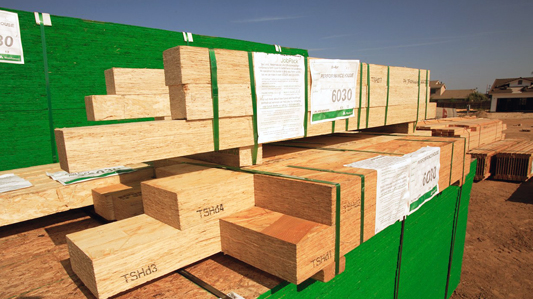
Environmental Product Declarations
Our products are covered by industry-wide EPDs hosted on the American Wood Council’s website. These EPDs were developed in compliance with 14025:2006 and ISO 21930:2017 and have been verified under the UL Environmental EPD program.
Back to Building Sustainably With Wood Overview
HELPING BUILDERS REDUCE WASTE
Our innovative construction techniques, such as NextPhase® Site Solutions, can reduce job-site waste and construction time by optimizing design, material cuts and assembly. Builders using NextPhase can also receive credits under major green building standards, including the National Green Building Standard and LEED for Homes.
By using this website, you agree to our Privacy Policy. California residents: See our CCPA Privacy Notice for details on what personal information we collect and for what purposes.

